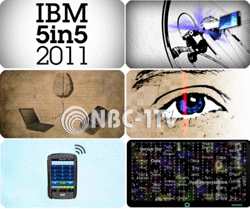
[By NBC-1TV H. J Yook]According to the World Energy Outlook 2010, electricity demand is expected to grow at 2.2 percent per year to 2035. This demand, combined with increasing populations, rise of electric vehicles, and inefficient infrastructures, will add more strain to the electricity grid. By engaging and empowering the consumer to make smarter energy decisions, the industry can further focus on accelerating innovation cycles and developing new programs that will help create a sustainable energy infrastructure.
In order to achieve this, it comes to down to ease and simplicity for the consumer. Today’s consumers are motivated by convenience, comfort, cost and the notion of being digitally connected, either by a smartphone or Web device – and the energy consumer is no exception. They understand the need to conserve but require the right tools and information to help make smart energy choices. Think about using a digital device and application to synchronize your appliances including your vehicle or, simply attaching a small device and an uncharged battery to the spokes of your bicycle wheels to determine how much energy was created and being able to capture and use this energy to potentially flick on the light in your home? The possibilities seem endless.
IBM Research is leading a new pilot project alongside EKZ, an electricity utility provider in Switzerland that will allow consumers to conveniently charge their electric vehicles (EV) and monitor energy costs, using a small device and Web-based application that can run on most smartphones, tablets and Web browsers. Users can also check the vehicle’s battery level, range of travel distance, vehicle location, charge schedule and current energy costs in real time. The application will alleviate range anxiety by allowing owners to program and start battery charge at a future point time when rates are lower or a long haul trip is planned.
Complimenting this project, IBM researchers, along with national labs and other organizations, are working to develop the next generation lithium-air battery technology that will allow an electric car to travel 500 miles on a single charge. This will deliver ten times the energy available from the top lithium-ion batteries on the market today, reducing the need for constant charging throughout the day.
But the energy we create ourselves isn’t just limited to our cars – it’s also in our homes. The home is a hub for energy, housing consumer electronics, kitchen devices, and air-conditioners, to name a few. However, how often do we think about the connection between energy and water or air quality, windows or even your sneakers? Yes sneakers!
A leading group of academics from Massachusetts Institute of Technology (MIT) released a report on parasitic power collection, the concept of collecting power from human walking motion as one example. According to the report, “the focus is on the walking action as a source of power because of the extensive range of motion and large dynamic forces associated with heel strike and the bending of the sole.” By inserting a small device into the sole of a sneaker and using a small antenna, it would be possible to parasitically generate enough power to charge a cellphone battery. This research will help drive the development of new parasitic power collection devices that will have the capability of pulling and transmitting energy from the slightest movement.
The Ocean contains vast quantities of untapped renewable energy. What if water could be used to power your kitchen appliances? With the right technology and tools, this energy can be harnessed and converted into electricity much in the way that wind energy can. IBM and The Sustainable Energy Authority Ireland (SEAI) are working together to explore this nascent industry, using real-time streaming analytics to monitor underwater noise generated by wave energy conversion devices -- a necessary and important step toward minimizing the environmental impact of converting wave energy into electricity. This collaboration, which seeks to accelerate methods and technologies that enable environmental impact assessment of wave energy conversion devices, represents a significant step toward the ability to successfully and sustainably utilize the ocean as a new renewable energy resource.